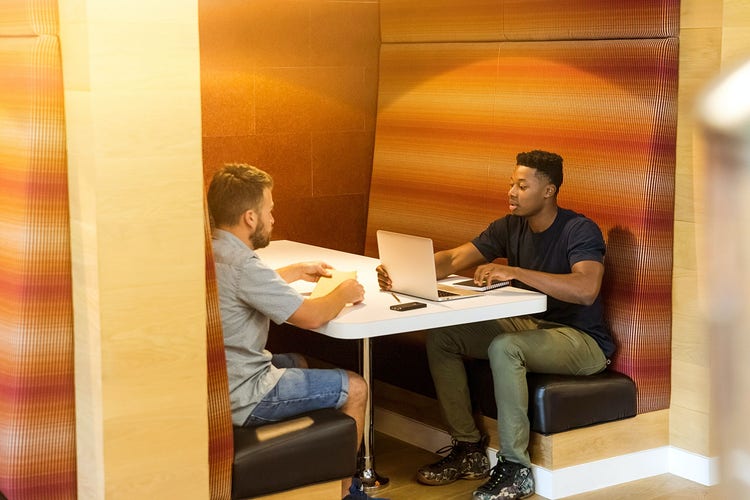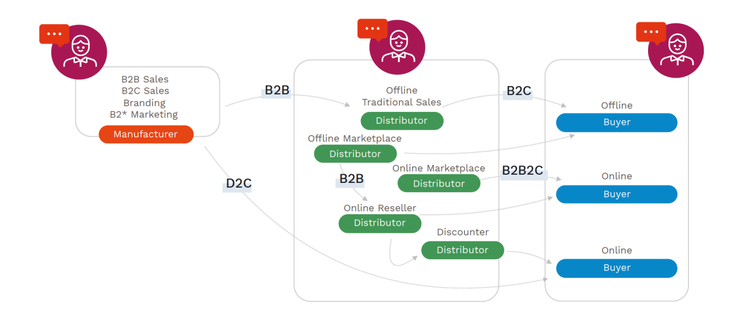Pillar 1: How They Buy, How You Sell

Before the emergence of e-commerce, B2B buyers had little choice but to contact a sales rep directly. This has been completely turned on its head, and statistics show that buyers postpone that decision to “break cover” for as long as possible and do an average of 12 searches before even engaging with the site of a specific brand.
Buyer autonomy is changing the role of B2B sales approach from one of (more or less aggressively) pushing the product to one of guiding the buyer along his or her customer journey. This guidance remains tacit or invisible for a long time; research shows that B2B buyers are more than half-way down their customer journey before a sales rep is contacted.
For the B2B seller, this means that the experience it creates must begin many clicks and many rival websites before the customer presents himself.
This changed rapport between B2B parties is captured very well by Jay Simons, president of software giant Atlassian. “Software should be bought, not sold ,” he says.
Transformative B2B businesses put this idea at the core of their strategy. SnackNation, a B2B start-up that is disrupting the huge market for office vending machines with its snack delivery subscription model, does not have customers but “members”.

The recognition of “customers” as active participants in your brand is one of the reasons behind the runaway success of Moo.com which has all but destroyed traditional print shops and home office businesses. Moo Community is a lively forum for budding entrepreneurs and seasoned marketers to exchange ideas about business cards — and of course a kind of perpetuum mobile of moo.com product promotion.
Another crucial insight of moo.com was innovative partnering. In the age of hyper-connectivity, no business is an island. In the photo app Flicks, moo.com found a partner that reflected its USP of personalized business cards and gave it cross-generational appeal to new markets, especially in the US.
It can be a small step from this new vision of the buyer to a new mission for the business – one where you no longer sell just to businesses but also directly to end users.
Redefining B2B in the Light of Digital Disruption
The direct-to-customer (D2C) business model does away with distributors and retailers, clearly an attractive idea which also responds to the growing consumer insistence on sustainability and provenance, ‘being close to the product’.
Not surprisingly, many startups are D2C, but consumer multinationals such as Unilever also want a piece of the action. Its move to purchase the D2C subscription service Dollar Shave Club for a staggering $1 billion was not so much a desperate bid for digital street cred as a smart way to disrupt the market position of Gillette, a brand owned by Unilever’s nemesis, P&G.
Photo by LinkedIn Sales Solutions on Unsplash